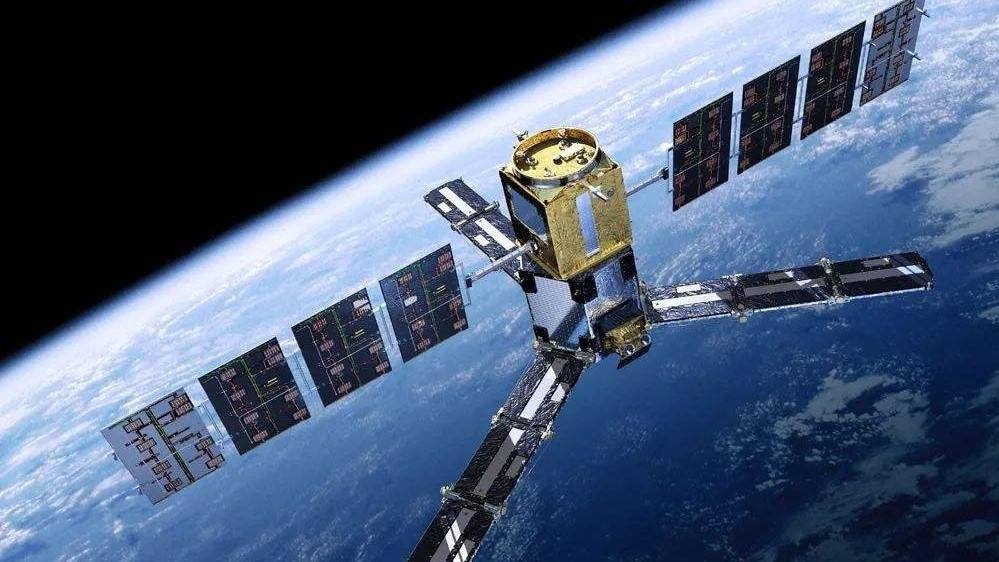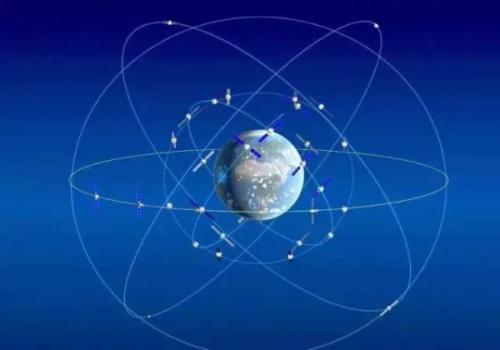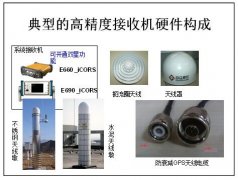近期,GPS World 對知名專家學者2019全球衛星導航行系統發展趨勢預測進行了梳理匯總,亮點頗多,不容錯過。全球定位系統處主任史蒂夫·惠特尼(Steve Whitney)上校指出:要通過GPS企業集成發展路線圖,著力發展ERTL、ERM及ERM-M-代碼三方面的能力。 ERTL主要聚焦于整合一系列頂尖資源,如新的衛星、新的地面系統和新的發射提供者,安全地將航天器送入預設軌道,并對其進行有效控制;ERM的目標為將GPS III衛星帶入活躍的星座,提供類似于當今星座系統的服務功能;ERM-M-代碼側重軍用,主要為戰士提供更強大、更具靈活性、抗干擾/防篡改的PNT信號能力。
歐洲空間局Galileo項目計劃部主任Javier Benedicto指出:自2016年12月宣布初始服務以來,歐洲航天局(ESA)和歐洲全球衛星導航局(GSA)一直致力于伽利略系統能力和服務魯棒性的建設。2019年初, Galileo的工作衛星將多達22顆。在星載軟件升級并可為用戶提供自動健康狀態標記后,衛星橢圓軌道上增加的兩顆FOC衛星會加入運行星座,屆時將有24顆伽利略衛星為全球用戶提供PNT服務支持。此外,歐空局已為第一批“過渡衛星”啟動了競爭性采購程序,其中考慮到了廣域增強及一些其他的新功能,包括改進的信號域、更快的信號采集能力、更低的接收器功耗、星載時鐘技術、星間鏈路、電力推進、靈活的有效載荷,以及通過機載數字技術和在軌重構實現的功率分配。
北斗衛星導航系統總設計師楊長風院士總結說:2018年北斗在系統建設、系統集成和國際發展等領域取得了豐碩成果。北斗二代系統性能得到了很大提升,北斗三代星座部署基本完成,并集成了前兩代北斗系統的短報文通信功能,短報文信息容量可達原來的10倍。2019年至2020年間,北斗將繼續努力提升服務的持續性、穩定性和準確性,并通過發射另外6顆MEO衛星、3顆IGSO衛星及2顆GEO衛星推進北斗三代衛星的部署, 實現2020年為全球用戶提供導航、定位、授時、短報文通信及搜救等服務的目標。
俄羅斯航天系統公司主管Yury Urlichich認為:2019年將為GLONASS用戶帶來許多新的機遇。通過用戶層面信號的準確性和可用性方面的評估獲取改善的導航服務能力是2019年的首要目標。Glonass-K2計劃于2019年發射。與Glonass-M和Glonass-K衛星相比,Glonass-K2的任務要求將用戶測距誤差定義為0.3米。提升導航精度主要借助空間系統的發展,包括軌道星座(空間部分)和地面控制部分,由此實現GLONASS用戶性能的改善。
現將GNSS 2019發展趨勢預測原文轉發如下,以饗業內同仁及廣大讀者。如果您對北斗衛星導航系統及產業發展有任何意見或建議,歡迎留言或直接與我們聯系。
正文:
BeiDou Accelerates Global Deployment
BY Yang Changfeng, CHIEF ARCHITECT, BEIDOU NAVIGATION SATELLITE SYSTEM
As one of the core GNSS, the BeiDou Navigation Satellite System (BDS) has been developed following a three-step development strategy. By around 2020, BDS will form a space constellation consisting of 30 satellites, including 3 satellites in geostationary earth orbit (GEO), 3 satellites in inclined geosynchronous satellite orbits (IGSO), and 24 satellites in medium earth orbits (MEO). It will provide free open and high- quality services, including navigation, positioning, timing, short message communication, search and rescue, and so on to the users worldwide.
In 2018, BDS has made fruitful results in the aspects of system construction, integrated applications, and international development.
System Construction
The stable operation of the BDS-2 constellation and construction of the BDS-3 constellation have resulted in solid achievements, while the deployment of the ground-based and satellite-based augmentation systems has made remarkable progress, and the International Multi-GNSS Monitoring and Assessment System (iGMAS) has been in stable and continuous operation
BDS-2 Improved Regional Services. Through upgrades and enhancements of the ground system, the service performance, stability and availability of the BDS-2 constellation has been improved. The analysis results shows that the nominal positioning accuracy of BDS-2 in its coverage area is better than 5 meters. To achieve user-oriented services, the Interface Control Document (ICD) for the open service signal B3I has been released.
The basic system of iGMAS has been completed, consisting of 24 ground stations and various centers, to provide raw data, basic products, and monitoring and assessment information services to users through the Internet and smart phones.
BDS-3 Constellation Deployment. By late 2018, 16 MEO BDS-3 satellites and 1 BDS-3 GEO satellite were in orbit. China successfully launched the 18th and 19th BDS satellites on Nov. 19th. Deployment of the basic BDS-3 constellation has been accomplished.
BDS Positioning Performance
The BDS-3 satellites equip with the higher-performance rubidium atomic clocks with stability of E-14 as well as hydrogen atomic clocks with stability of E-15. The signal-in-space (SIS) accuracy will be superior to 0.5m, the position accuracy will reach 2.5m to 5m, and the overall performance will be dramatically improved. The in-orbit test results have indicated that the BDS-3 satellites are in sound condition, and the performances can satisfy nominal parameters. For the convenience of public applications, the ICDs of the new signals, B1C and B2a, have been released.
BDS-3 will inherit the short message communication service from its predecessors, and will further enhance the basic PNT service capabilities. Satellite-Based Augmentation System (SBAS) and Search and Rescue (SAR) services will be developed according to the international standards.
Ground-based Augmentation. The BDS/GNSS Ground-based Augmentation System has completed the deployment of 155 framework reference stations and nearly 2,400 regional stations in China. The system has carried out high-precision applications in many fields, such as surveying, national resources, disaster mitigation, transportation, meteorology, and offered basic services for users, including real- time navigation services at meter-level and decimeter-level, as well as precise positioning services at centimeter- level and millimeter-level.
First SBAS GEO Satellite. The BeiDou Satellite-based Augmentation System (BDSBAS) is being developed in accordance with the International Civil Aviation Organization (ICAO) standards, to offer navigation services with superior accuracy and integrity. In November 2018, the first GEO satellite with SBAS and SAR payloads has been successfully launched. The short message communication service offered by the satellite will be fully compatible with that of BDS-2, while the service volume will be increased by 10 times and the user’s transmit power will be reduced to 1/10. As the result, the user terminals will possess smaller size, higher integration and enhanced capacity.
Integrated Applications
As the system construction accelerates, BDS is also making great efforts to strengthen the development of the national reference Station network fundamental products and applications in various fields. The integrated applications adopt the “BDS+” model, to stimulate the growth of satellite navigation industry.
Fundamental Products. At present, the fundamental BDS products have been used in mass market applications, of which the performance has reached or close-to the world-class level. By the 3rd quarter of 2018, the sales volume of BDS navigation chips and modules exceeded 70 million pieces, and the amount of the BDS-enabled terminals surpassed 500 million pieces or sets. In 2017, the domestic output value is more than RMB 250 billion (US $36 billion), in which the BDS contribution exceeds 80%.
The national reference station network
Industrial Applications. BDS continues to facilitate the integrated applications and development of related industries; to bring GNSS high- precision services in combination with cloud computing, Internet of Things, big data and other technologies; to push forward the fusion among BDS-related industries and high- end manufacturing, software, integrated data industries, and to enable BDS-based applications to solve the problems associated with national economy and people’s livelihood. BDS has been integrated into various national significant infrastructures, by providing time and space references for transportation, meteorology, agriculture, electricity, communications, finance and other industries.
Meanwhile, “BDS+” and “Time and Space+” applications targeted towards the mass market are enjoying a broader future prospect. The BDS- based navigation services have been adopted by various enterprises in the fields of smart mobile terminal manufacture, location-based services (LBS), e-commerce, and so on. The BDS-based LBS have been widely use in the public consumption sector and people’s livelihood, which have been changing people’s life by providing more conveniences for the public.
BDS International Development. BDS continuously pushes forward international development, carries out practical cooperation and exchanges, and promotes the development of GNSS community, to better serve the world and benefit mankind.
BDS actively participates in related activities under the framework of the United Nations, other international organizations and multilateral platforms. In June, 2018, BDS took part in the UNISPACE+50 Exhibition and donated a BDS-3 satellite model to the United Nations Office for Outer Space Affairs. In November, 2018, the Thirteenth Meeting of the International Committee on Global Navigation Satellite Systems (ICG-13) was successfully held in Xi’an, China. His Excellency Xi Jinping, President of the People’s Republic of China, sent a congratulatory letter to the ICG-13, and expressed that “China is willing to work with all countries, to share the construction and development achievements of BDS, and to jointly promote the development of global satellite navigation”. More than 400 representatives from 16 nations and 16 regional and international organizations attended the meeting and made in-depth exchanges on over 20 topics related to satellite navigation.
BDS has always been exploring joint applications with other compatible navigation satellite systems, and carrying out bilateral coordination and cooperation. In November, 2017, the Joint Statement of BDS and GPS Signal Compatibility and Interoperability was signed, which stated that the two systems were radio-frequency compatible within the framework of ITU, and BDS B1C civil signal and GPS L1C civil signal had achieved interoperability. In November, 2018, the Agreement between the Government of the People’s Republic of China and the Russian Federation on Cooperation in the Field of the Use of BDS and GLONASS for Peaceful Purposes was signed, which would facilitate the complementarity and integrated development, promote practical cooperation projects, and contribute to more efficient and reliable services for global users.
At present, BDS has covered more than 50 countries and over the population of 3 billion people. The BDS-related products have accessed to the markets of over 80 countries and regions. In April, 2018, the first overseas BDS/GNSS Center was opened by China Satellite Navigation Office and the Arab Information and Communication Technology Organization, to enrich the public awareness, experience and applications of BDS in Arab nations. The international GNSS Monitoring and Assessment System (iGMAS) has contributed to the implementation of the Asia-Pacific Space Cooperation Organization project, iGMA- International GNSS Service Pilot experimental project, and Sino- Russian monitoring and assessment cooperation, and has provided GNSS users with authentic third-party assessment results.
Future Plans
BDS will continuously promote joint applications of multiple navigation satellite systems, and provide global users with diversified choices for better application experiences. BDS welcomes users and equipment providers worldwide to participate in the Global Users’ Experience and Evaluation Campaign (relevant information can be referred to the BDS official website: www.beidou.gov.cn), and will release the experience and evaluation results when appropriate.
By the end of 2018, BDS-3 will possess the initial operational capability and implement all-round validation on its global service performance. Between 2019 and 2020, BDS will keep improving its continuous stability and service accuracy, maintain the BDS-2 service performance stable and enhanced, and continue the BDS-3 deployment by launching another 6 MEO satellites, 3 IGSO satellites, and 2 GEO satellites, to eventually possess global service capabilities by 2020.









